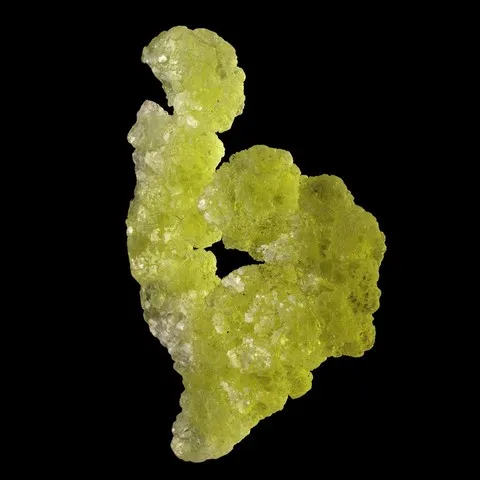BRUCITE
Class : Oxides and Hydroxides
Subclass : Hydroxides
Crystal system : Trigonal
Chemistry : Mg(OH)2
Rarity : Quite common
Brucite is a low temperature hydrothermal hydroxide. It is a product resulting from the serpentinization of peridotites which can also form veins in metamorphic limestones and chloritoschists. Brucite owes its name to the American physicist and mineralogist Archibald Bruce, founder of the American Mineralogical Journal, who first observed it in 1814. It is generally in lamellar or foliated masses, undulating, rarely spherical with a low hardness (2.5), reminiscent ogypsum ; it can also be fibrous (nemalite variety) with separable and elastic fibers up to 50 cm in size. It is also common in stacking hexagonal tabular crystals (each crystal can measure up to 20 cm) and are gathered in colorless or white subparallel aggregates, brucite can also be green, yellow, or blue. By its geology, it is a mineral that only very rarely occurs in aesthetic and developed formations. It is a very accessory mineral of magnesium but also a mineral that enters in the composition of magnesium refractories (ceramics resistant to high temperatures). It should also be noted that some brucites of translucent to semi-transparent quality have been cut in faceted gemstones but this is only reserved for the gemstones collector's.
Brucite in the World
Fakes and scams
No fakes reported for this mineral species.
Hardness : 2.5
Density : 2.39
Fracture : Irregular
Trace : White
TP : Translucent to transparent
IR : 1.56 to 1.60
Birefringence : 0.02
Optical character : Uniaxe -
Pleochroism : None
Fluorescence : White to blue
Solubility : Hydrochloric acid
Magnetism : None
Radioactivity : None






